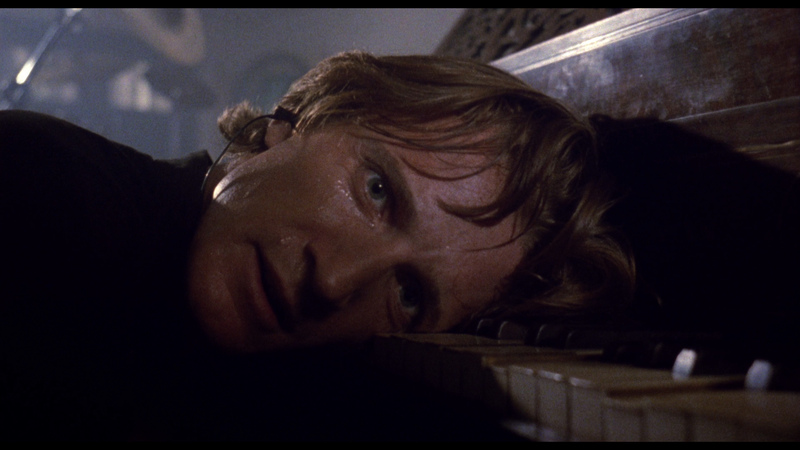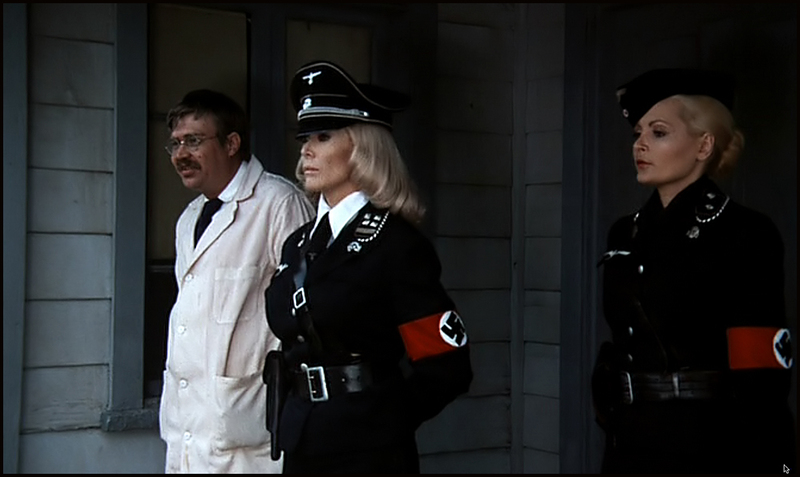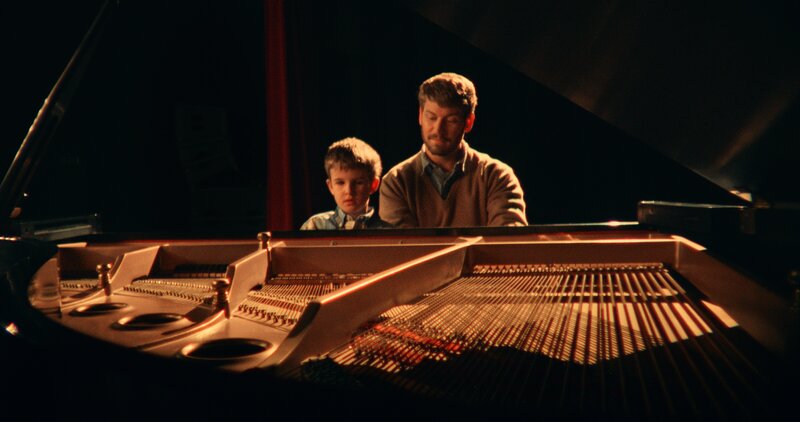
When Obsession Becomes the Puzzle Itself
MOVIE REVIEW
Body Puzzle
–
Genre: Horror, Thriller, Mystery
Year Released: 1992, Kino Lorber Blu-ray 2025
Runtime: 1h 38m
Director(s): Lamberto Bava
Writer(s): Lamberto Bava, Teodoro Corrà, Bruce Martin
Cast: Joanna Pacula, Tomas Arana, François Montagut, Gianni Garko, Erika Blanc
Where to Watch: available October 14, 2025, pre-order your copy here: www.kinolorber.com or www.amazon.com
RAVING REVIEW: Released in 1992, BODY PUZZLE stands as one of the final gasps of Italy’s once-glorious giallo tradition—a cinematic language defined by color, style, and perversity. By the early ’90s, audiences had shifted toward Hollywood thrillers like THE SILENCE OF THE LAMBS, and what icon Lamberto Bava crafted here feels like a haunting farewell to a genre that once ruled Italian horror. However, it is certainly not without its charm.
The story unfolds like a tragic fever dream. Tracy Grant (Joanna Pacula) is mourning her husband’s death when her grief turns nightmarish: someone begins leaving severed body parts around her home, each linked to victims of a new serial killer. Assigned to the case is Detective Michele Livet (Tomas Arana), a man whose professional concern turns into an all-too-personal relationship with the widow. Beneath the police procedural exterior lies something more twisted—a mystery tied to the past, where love, loss, and obsession become indistinguishable.
Pacula delivers a performance that’s both fragile and resilient. Her eyes carry the weight of grief that feels almost operatic, anchoring the absurdity that unfolds around her. She doesn’t scream her way through the horror; instead, she internalizes it, turning Tracy into a character consumed by dread yet desperate for connection. Arana’s detective, by contrast, is the picture of 1990s stoicism—professional, protective, and hopelessly out of his depth. Their chemistry has an uncomfortable energy, one that feels simultaneously romantic and wrong, which is precisely the point.
Visually, BODY PUZZLE is unmistakably Bava. Lamberto, following in his father Mario’s footsteps, fills the screen with gothic spaces and unnerving angles. Luigi Kuveiller’s cinematography (known for DEEP RED and A WOMAN IN A LIZARD’S SKIN) provides a visual flair missing from many of the era’s thrillers. Even as the plot veers into chaos, there’s always something compelling to look at—a blend of late-20th-century decadence and decaying beauty. The use of Modest Mussorgsky’s Night on Bald Mountain as the killer’s theme is so inflated that it circles back to brilliance, making every murder sequence feel like a twisted ballet.
One of the film’s standout scenes—a murder committed in a classroom of blind children while “Peter and the Wolf” plays—captures everything BODY PUZZLE does best. It’s horrifying, absurd, and oddly poetic. Bava’s confidence in staging violence as theater recalls the heyday of Dario Argento and Lucio Fulci, but with a more mournful tone. There’s less fetishism here and more fatalism. The killer’s identity is never hidden; instead, the film focuses on the “why,” which becomes its own sort of tragic riddle.
Even the most dedicated giallo fans will admit that BODY PUZZLE is uneven. Its script feels stretched thin, with motivations explained through hasty exposition and police work that borders on parody. The central twist—rooted in organ donation and a husband’s secret life—lands with a mix of surprise and absurdity. It’s not that the idea lacks imagination, but it’s executed with a melodramatic flair that undercuts the emotional impact. When the pieces finally fit together, they form a picture that’s more lurid than logical.
That said, dismissing BODY PUZZLE as a relic would be missing the point. Bava wasn’t trying to modernize giallo—he was memorializing it. By the time this film hit theaters, Italian horror had nearly collapsed under market pressure and cultural fatigue. What remains here is the ghost of a genre: ornate death scenes, troubled romance, and a fixation on the human body as both a source of desire and terror. There’s a beauty in watching Bava cling to those traditions even as the world moved on.
The Kino Lorber release gives the film the treatment it deserves. With a restoration and an audio commentary by historians Adrian Smith and Rod Barnett, this Blu-ray provides BODY PUZZLE with the context it never had during its initial run. The alternate Italian track and optional subtitles help preserve its authenticity, reminding viewers how much tone can shift through translation. It’s not just another resurrected horror relic—it’s a preservation of cinematic identity, a time capsule of when Italian horror still dared to be elegant amid the grotesque.
It fluctuates between campy excess and introspection, never quite finding the perfect balance. At times, it plays like a parody of its predecessors; at others, it reaches for tragedy. But that friction is also what makes it fascinating. Bava seems torn between honoring the past and adapting to a future that no longer has patience for his kind of storytelling. In that struggle, BODY PUZZLE becomes strangely moving—a film about loss, obsession, and the desperate need to hold on to something that’s already gone.
BODY PUZZLE works best as an epitaph for the golden age of giallo. It’s not as hardened as TENEBRE or as daring as OPERA, but it carries the melancholic aftertaste of a director who still believed in mystery as a sensual act. For all its flaws, it’s impossible to deny its atmosphere and intent. The murders may shock, the romance may feel wrong, and the logic may crumble—but like the dismembered pieces at its core, it’s the fragments that linger in memory.
BODY PUZZLE is flawed, beautiful, and unmistakably human—a macabre meditation on grief disguised as a murder mystery. It’s not the most coherent film Bava ever made, but it might be his most mournful. A fascinating, late-period giallo that straddles sincerity and absurdity, held together by Pacula’s commanding performance and Bava’s unshakable devotion to the craft. A haunting relic worth rediscovering.
Please visit https://linktr.ee/overlyhonestr for more reviews.
You can follow me on Letterboxd, Instagram, Twitter, and YouTube. My social media accounts can also be found on most platforms by searching for 'Overly Honest Reviews'.
I’m always happy to hear from my readers; please don't hesitate to say hello or send me any questions about movies.
[photo courtesy of KINO LORBER, RARO CINEMA ART VISIONS]
DISCLAIMER:
At Overly Honest Movie Reviews, we value honesty and transparency. Occasionally, we receive complimentary items for review, including DVDs, Blu-rays, CDs, Vinyl Records, Books, and more. We assure you that these arrangements do not influence our reviews, as we are committed to providing unbiased and sincere evaluations. We aim to help you make informed entertainment choices regardless of our relationship with distributors or producers.
Amazon Affiliate Links:
Additionally, this site contains Amazon affiliate links. If you purchase through these links, we may receive a commission. This affiliate arrangement does not affect our commitment to honest reviews and helps support our site. We appreciate your trust and support in navigating these links.



Average Rating